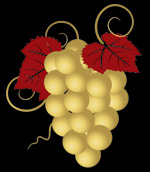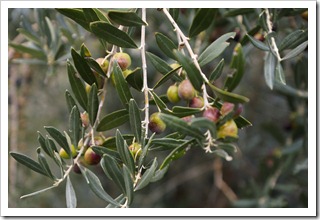 Back in late November I had the pleasure of visiting Lidia Castellucci and Roberta Giaccherini, proprietors of the Buccelletti wine & olive oil estate, about an hour south of Florence near Cortona in Tuscany. It was the peak season for the olive harvest, and Lidia gave me a tour of her olive grove while workers were finishing up the harvest.
Back in late November I had the pleasure of visiting Lidia Castellucci and Roberta Giaccherini, proprietors of the Buccelletti wine & olive oil estate, about an hour south of Florence near Cortona in Tuscany. It was the peak season for the olive harvest, and Lidia gave me a tour of her olive grove while workers were finishing up the harvest.
Later in the day, I went with my buddy Arnaldo at Pane e Vino in Cortona to the local Frantoio, or olive oil press, to witness the pressing of this season’s olives into that green elixir of Extra Virgin olive oil.
Here’s my photo essay of the olive oil making process, from collecting the olives to pressing and bottling the oil.
Read my full blog post about Buccelletti and the making of olive oil here.
Enjoy!
— Michael

The Val di Chio, with Castiglion Fiorentino far in the distance. Nestled amongst the grapes and sunflowers and corn are olive groves that are hundreds of years old, lovingly tended by the locals.
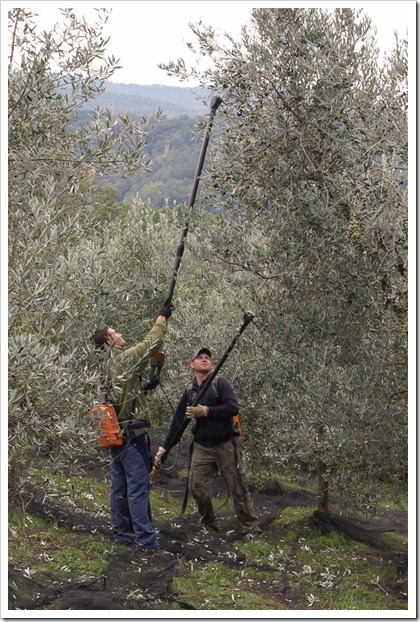 When you’re harvesting from hundreds of trees, picking by hand is not a practical option. Instead, harvest is done with what looks like a pitchfork at the end of a gas-powered, 8-foot long handle. Pickers slip the tines of the pitchfork high up into the limbs of the olive tree, fire up the engine and the tines rapidly (but gently) vibrate the limbs and knock the olives loose.
When you’re harvesting from hundreds of trees, picking by hand is not a practical option. Instead, harvest is done with what looks like a pitchfork at the end of a gas-powered, 8-foot long handle. Pickers slip the tines of the pitchfork high up into the limbs of the olive tree, fire up the engine and the tines rapidly (but gently) vibrate the limbs and knock the olives loose.
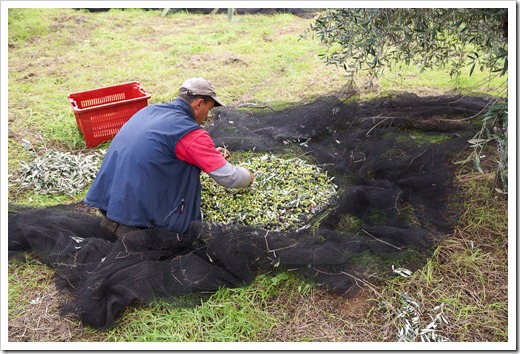
Olives fly everywhere when the harvesting tool vibrates the olive tree limbs. Fine mesh nets are spread under the olive trees to catch the flying fruit.
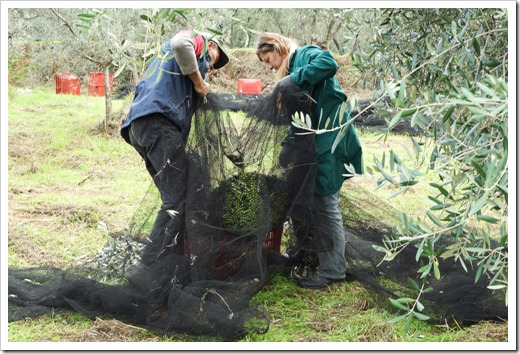
Pickers collecting the olives after they have been cleaned up of any dubious fruit, leaves and twigs.
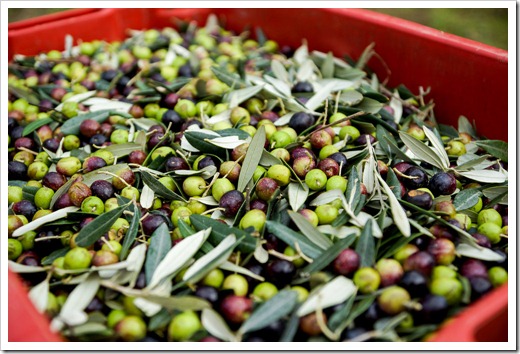
The harvested olives, ready for transport to the Frantoio.
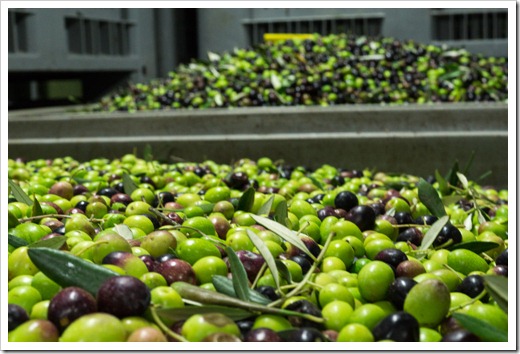
At the Frantoio, locals bring their olives and wait…and wait…and wait until it’s their turn to press their olives.
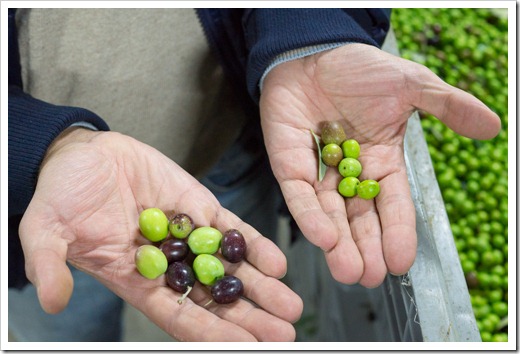
Olives used for extra virgin olive oil come in many sizes, shapes, and colors.
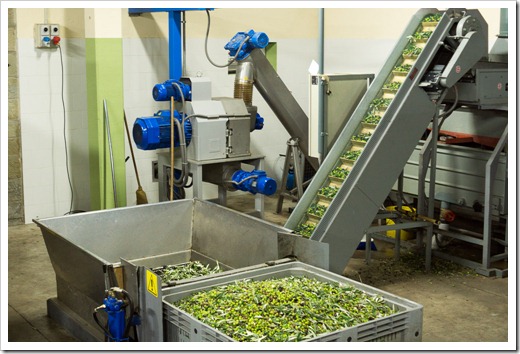
Olives ready for cleaning and separating from olive leaves, twigs, and bugs.
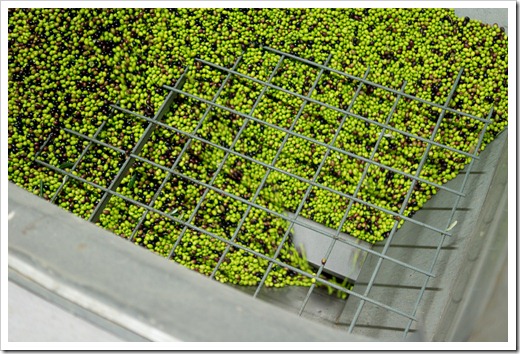
Olives cleaned and ready for the press.
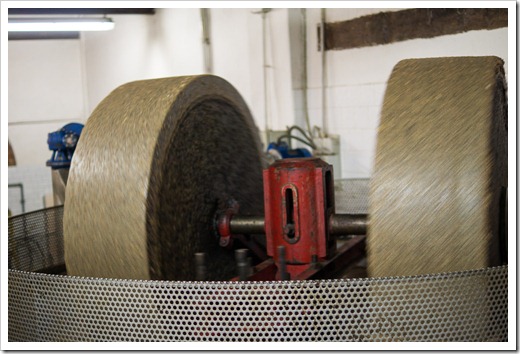
Large granite wheels are used to grind the olives, pits and all, into a very fine paste. These wheels go round-and-round as olives are slowly added.
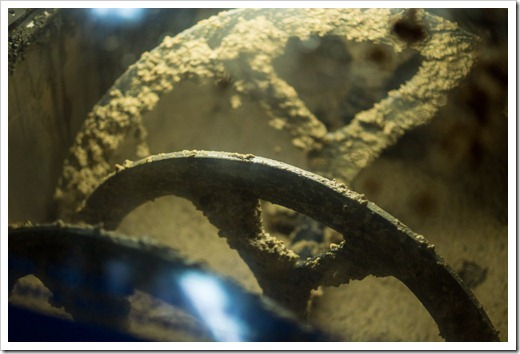
The olive mash is further made uniform with this corkscrew-like machine, slowly moving the mash down the line toward the press mats.
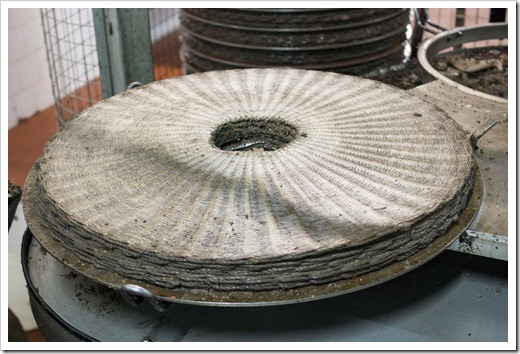
Once upon a time, layers of straw mats were assembled with the olive mash between them. These days, a tough polymer mat is used to separate the layers of olive mash.
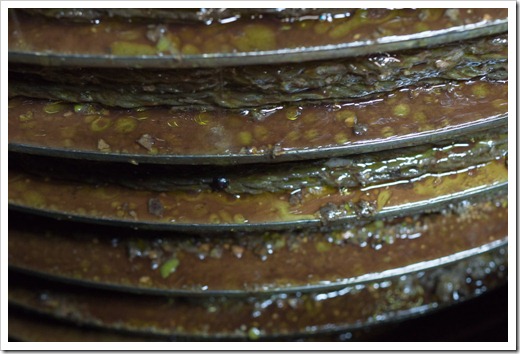
The olive mash is layered between the mats into a tall stack on a pressing spindle.
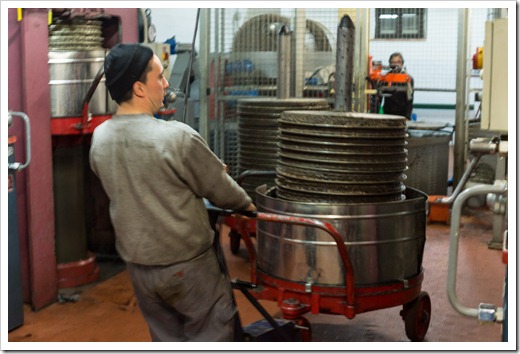
Frantoio workers assemble the stacks of mats and olives, then wheel them over to the hydraulic press.
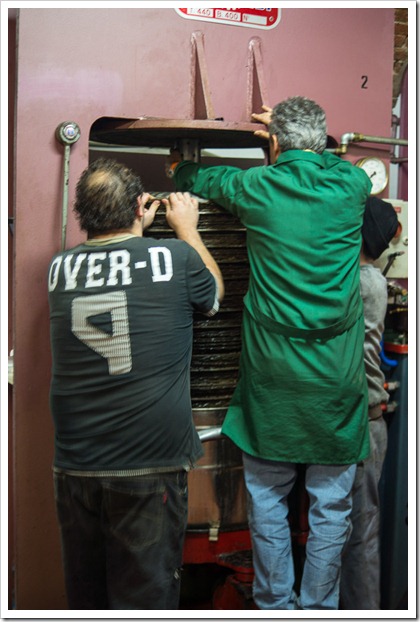
Workers loading the mat stack into the hydraulic press. These stacks are loaded with olive mash and quite heavy.
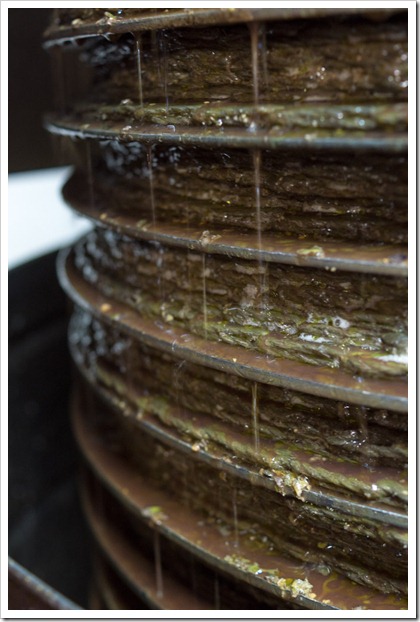
Here’s where the magic occurs – the hydraulic press applies slow, steady pressure as the mash releases its oil and water from the olives. The emulsion is collected in a pool below.
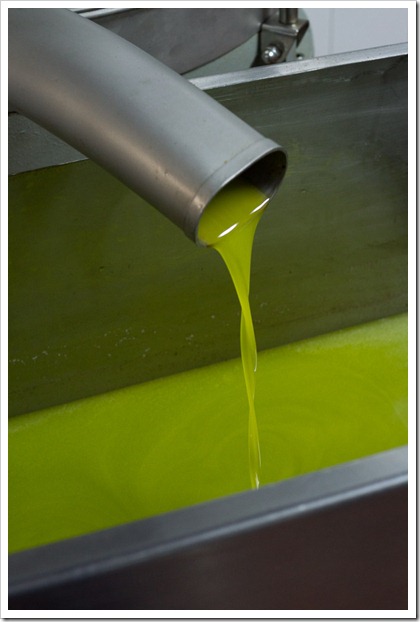
In the old days, the oil and water emulsion was left to settle, with the oil floating on top of the olive water. These days, the oil and water emulsion is transferred to a centrifuge that quickly (but gently) separates the oil from the water – leaving you with just pure olive oil.
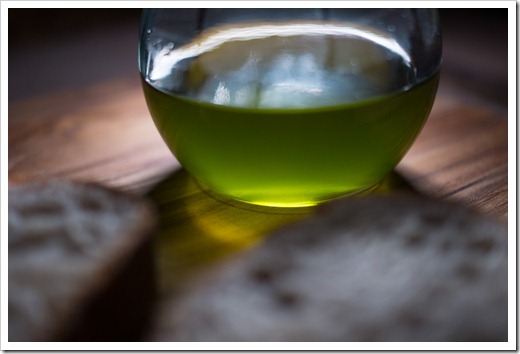 The finished organic, extra virgin product: bright green new oil with an intense fruitiness, artichoke and grassy notes, and the classic Tuscan pepperiness on the finish.
The finished organic, extra virgin product: bright green new oil with an intense fruitiness, artichoke and grassy notes, and the classic Tuscan pepperiness on the finish.
Buon appetito!

Michael Horne, CS
Los Gatos, CA USA
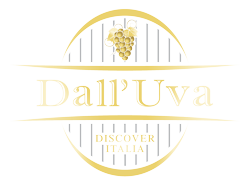


















 The finished organic, extra virgin product: bright green new oil with an intense fruitiness, artichoke and grassy notes, and the classic Tuscan pepperiness on the finish.
The finished organic, extra virgin product: bright green new oil with an intense fruitiness, artichoke and grassy notes, and the classic Tuscan pepperiness on the finish.
